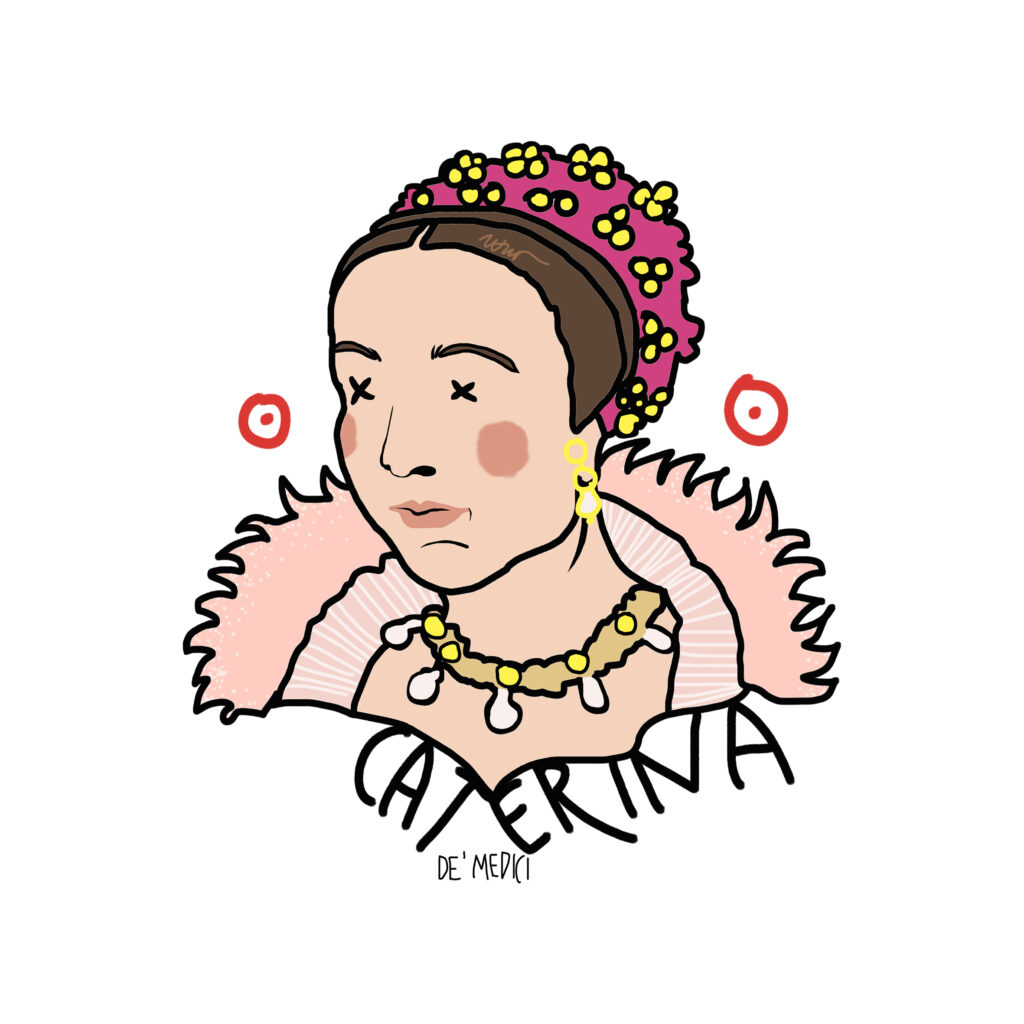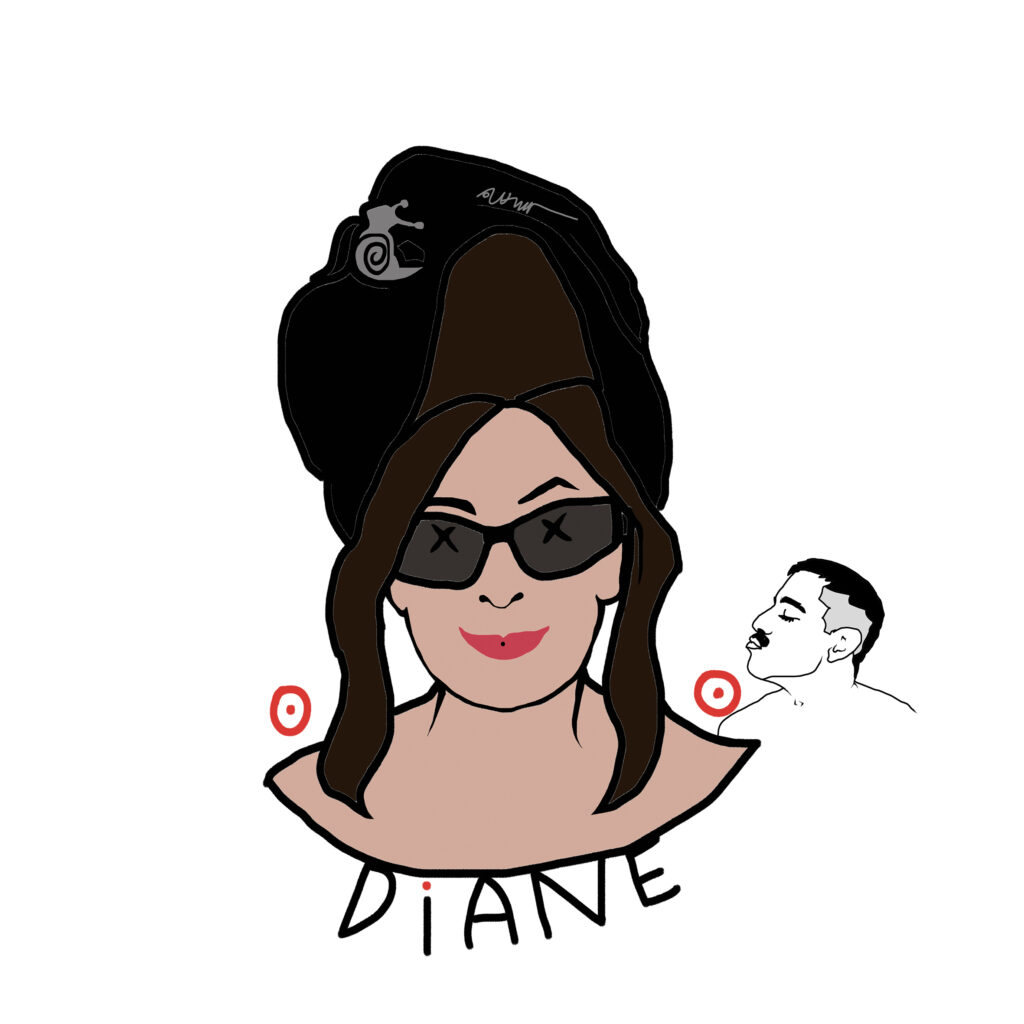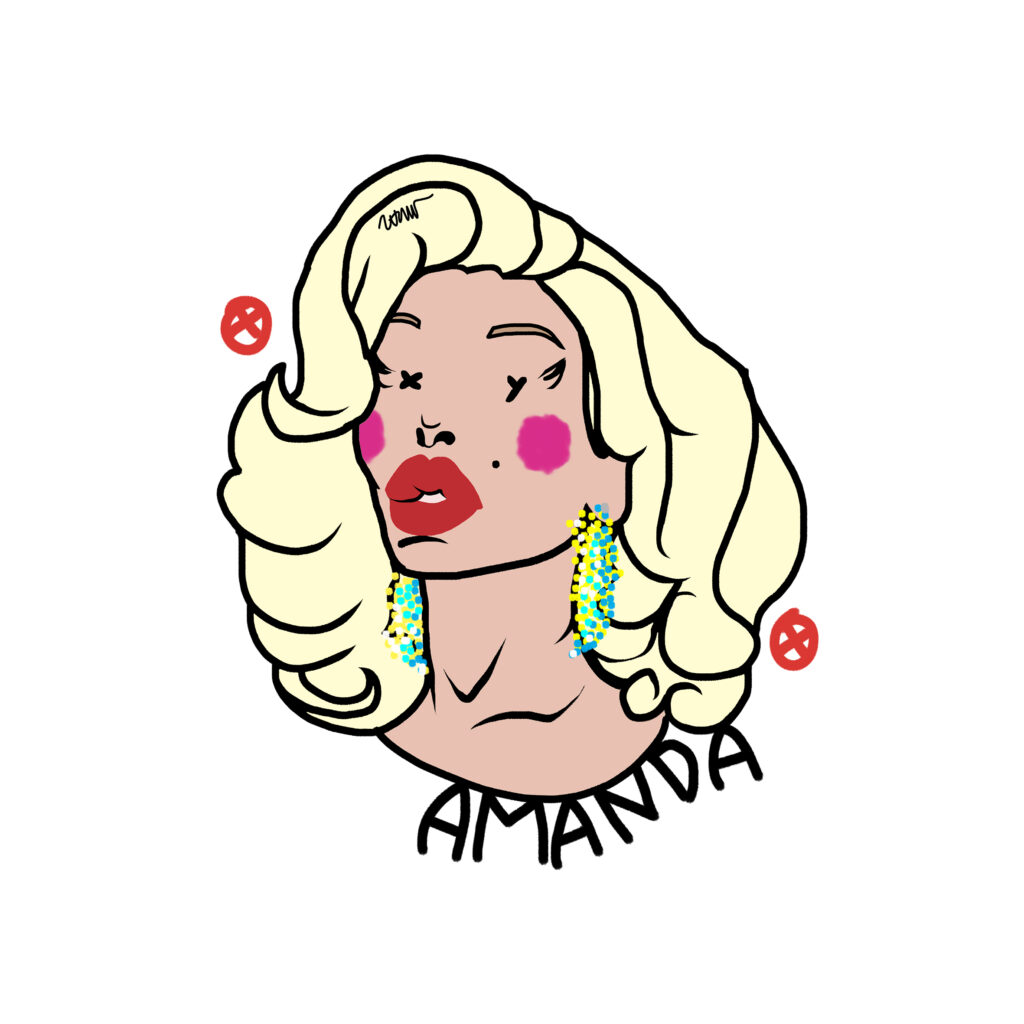“I realized I had crossed a threshold. There was no going back. That was my new language. My new skin.” – Saul Zanolari

Italian art sensation Saul Zanolari‘s portraits, facial features reduced to a minimum and eyes replaced by sexual chromosomes (XX or XY), have taken social media by storm. On Instagram, Zanolari often animates subjects like Anna Wintour, Keith Haring, fashion doyenne Diane Pernet, Mickey Boardman, Patricia Field and even yours truly. See Haring’s face on a muscle bound beach hunk or nightlife figure Amanda Lepore on the body of a model strutting the catwalk. Having Zanolari illustrate you has become as coveted on Instagram as that prized blue “verified account” check. “This project grows through the reactions it provokes,” Zanolari tells Avenue. “It’s a living dialogue, a game of call and response. Part of the magic is precisely in not knowing who will come next.”
Zanolari’s magical touch will be seen at the Museo de’ Medici in Florence where he has a solo show called XXY – de’ Medici that opens on June 16th. With his signature minimal aesthetic, Zanolari has created portraits arranged in vertical totems made of engraved and painted cubes. On the walls of the museum’s greenhouse are more than 30 stylized portraits of people like Lorenzo the Magnificent, Catherine de’ Medici, Cosimo I and cultural icons Michelangelo, Botticelli, Galileo and Machiavelli. “This is not a biography,” the artist says, saying the show “introduces an essential, graphic visual language to the legacy of the Medici family.” – PETER DAVIS
“With my portraits, I like to play with masks and identity, to blur the line between truth and fiction.” – Saul Zanolari

How do you pick who to draw? I’m flattered I made the cut.
The choice of subjects always stems from an inner urgency. I went through a very dark period, and out of that came the need to shed my skin, to rewrite my visual language. I started stripping everything away—anything decorative, anything non-essential—until I reached the core. The XXY PORTRAITS are the result of that process of reduction and transformation. The figures I’ve portrayed are extraordinary, yes—but above all, they’re meaningful to me. Each of them, in some way, has shaped my life in the past three years.
The animations you do are the best thing on my Instagram feed.
It began almost by accident—just a side experiment—but quickly became essential to my language. My portraits are stripped to their genetic essence. They’re about nature. But everything around them—posture, movement, sound—is culture. And what makes us human, what sets us apart from animals, is precisely that: the ability to define ourselves, even to contradict ourselves. The animations represent that freedom—the freedom to become infinite versions of yourself, even your opposite. They also allow me to observe people’s reactions to their own image. Some laugh, others are disturbed or intrigued. It’s disorienting. And in that disorientation, something real breaks through.

This is a new period in your art.
For over fifteen years, my style was radically different—hyper-detailed digital portraits, often shown in galleries. Two early series I’m deeply attached to are “Fashion Icons” and “SZ Chapel,” my personal reinterpretation of the Sistine Chapel, recreated in 1:1 scale. But when I felt the urge to change, I went back to the beginning. I took the same subjects and stripped them bare, down to the bone. In this new phase, the first figure I redrew was Anna Wintour. It was both a return and a rebirth.
Was there a piece of art that changed your life?
The first time I saw a drawing by Egon Schiele—a red-haired boy, raw and almost dirty—I felt an electric jolt. I knew instantly: this could have been mine. That moment changed everything. It taught me that imperfection, when honest, can be more powerful than any polished surface. In my own journey, two works mark turning points. The first is SZ Chapel: massive, obsessive, deeply personal—I lived inside it for over three years. The second is Simone, one of the first XXY PORTRAITS. That was the moment I realized I had crossed a threshold. There was no going back. That was my new language. My new skin.
You are a global citizen.
Every city I’ve lived in has left a mark. Beijing for its chaos and cultural distance—it forced me to lose and rebuild myself. New York for its kinetic energy, where everything seems possible and already done. Madrid, for its golden light and emotional softness. Paris, where elegance flirts with melancholy on every corner. Shanghai, with its futuristic pace and the illusion that reinvention is always possible.And Milan—my current base—for being both center and periphery. A place of contrasts, much like me.




You are very prolific.
Even though I often speak of my work as a game, it’s a serious game—just like life. With my portraits, I like to play with masks and identity, to blur the line between truth and fiction. There’s always an element of play, but it’s laced with gravity. I’m fascinated by the space where seriousness and irony collide—where appearance and essence fold into each other. That’s where transformation begins. That’s where art lives.


